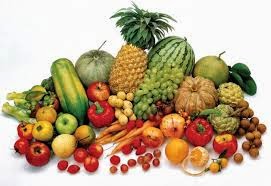The fruit is a part of the plant is a further development of the ovaries (ovarian). Fruit is generally wraps and protects the seed. Any kind of fruit is associated with important functions fruit, namely as pemencar seed plants.

Understanding the fruit within the scope of agriculture (horticulture) or food is broader than the definition of fruit on top and usually named as fruits. Fruit is not independent in the sense that is formed from the ovaries, but can also come from the development of other organs. Therefore, to distinguish, fruit in keeping within the meaning of botanical commonly called the true fruit.Fruit often has economic value as food and industrial raw materials because it is stored in a wide variety of plant metabolic products, ranging from carbohydrates, proteins, fats, vitamins, minerals, alkaloids, until terpene and terpenoids. The study of the fruit called pomologi.On the many species of plants, which includes fruit called the fruit will have grown up along with the surrounding tissue. For flowering plants, fruit is a tool for spreading the seeds; their seeds inside can indicate that the organ is a fruit, although there are also seeds that are not derived from the fruit.Each ovary is composed of one or more ovules (ovulum), each of which contains an egg. Ovule was fertilized by a process dimuali by pollination events, namely the transfer of pollen from the anthers to the stigma. After the pollen stuck to the stigma, the pollen germinates and grows into a reed contents pollen that contains sperm. It continues to grow through the reed stalk pistil toward the ovule, in which the merger between the sperm derived from the pollen and an egg cell that resides in the ovule, forming a diploid zygote. Fertilization in flowering plants involves both plasmogamy, namely the union of egg and sperm cell protoplasm, and kariogami, namely the union of both the cell nucleus.After that, zygotes that form began to grow into an embryo (the institution), the ovule grows into a seed, and the walls will be fruits, called the pericarp, grew into a fleshy (on stone fruit or drupa) or forms a protective layer that is dry and hard (on fruit Geluk or Nux). Then, calyx (sepals), the crown (petal), stamens (stamens) and the pistil (the pistil) would fall or could be survived in part until the fruit becomes. This fruit formation continues until the seeds become ripe. In most drupe many, growth flesh is generally proportional to the number of fertilized ovule.
Link : http://buahmu.blogspot.com/2014/06/pengertian-buah.html

Understanding the fruit within the scope of agriculture (horticulture) or food is broader than the definition of fruit on top and usually named as fruits. Fruit is not independent in the sense that is formed from the ovaries, but can also come from the development of other organs. Therefore, to distinguish, fruit in keeping within the meaning of botanical commonly called the true fruit.Fruit often has economic value as food and industrial raw materials because it is stored in a wide variety of plant metabolic products, ranging from carbohydrates, proteins, fats, vitamins, minerals, alkaloids, until terpene and terpenoids. The study of the fruit called pomologi.On the many species of plants, which includes fruit called the fruit will have grown up along with the surrounding tissue. For flowering plants, fruit is a tool for spreading the seeds; their seeds inside can indicate that the organ is a fruit, although there are also seeds that are not derived from the fruit.Each ovary is composed of one or more ovules (ovulum), each of which contains an egg. Ovule was fertilized by a process dimuali by pollination events, namely the transfer of pollen from the anthers to the stigma. After the pollen stuck to the stigma, the pollen germinates and grows into a reed contents pollen that contains sperm. It continues to grow through the reed stalk pistil toward the ovule, in which the merger between the sperm derived from the pollen and an egg cell that resides in the ovule, forming a diploid zygote. Fertilization in flowering plants involves both plasmogamy, namely the union of egg and sperm cell protoplasm, and kariogami, namely the union of both the cell nucleus.After that, zygotes that form began to grow into an embryo (the institution), the ovule grows into a seed, and the walls will be fruits, called the pericarp, grew into a fleshy (on stone fruit or drupa) or forms a protective layer that is dry and hard (on fruit Geluk or Nux). Then, calyx (sepals), the crown (petal), stamens (stamens) and the pistil (the pistil) would fall or could be survived in part until the fruit becomes. This fruit formation continues until the seeds become ripe. In most drupe many, growth flesh is generally proportional to the number of fertilized ovule.
Link : http://buahmu.blogspot.com/2014/06/pengertian-buah.html

0 komentar:
Posting Komentar